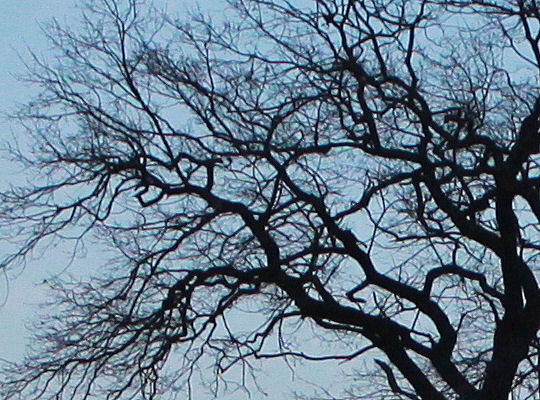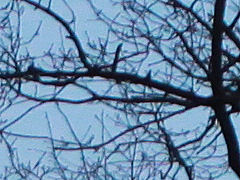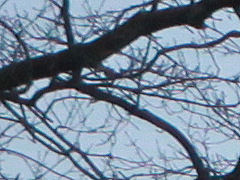Support
You can support this site without any cost or disadvantage at all by clicking this link to Amazon or the one on the left before buying anything – be it underpants, a cupboard, a TV, a pen, a lens or a camera. Amazon is the only shop worldwide, I’m really satisfied with to a 100%, so I have no caveats advertising them. Of course, you can also directly donate a small amount of money, e.g. the amount you would have spent for a magazine, with the button on the left.
Canon EF 28-80mm 1:3.5-5.6 USM
One of Canons hardly known secrets and one of my real secret-tips: An extremely cheap today, very well made and optically very good standard-zoom for "fullframe" and 35mm film.
The slow 28-to-something - zooms have been in the days of film, what the 18-55mm 1:3.5-5.6 - zooms are today: Cheap standard - lenses for beginners, that are shipped with (lower priced) camera bodies for very little additional cost compared to the body itself. You are supposed to get a functioning camera, not a body alone, you can't do anything with, and having to buy another expensive accessory, maybe preventing you from buying the camera at all. So, todays 18-55mm KIT-lenses are built extremely cheap, but cover most shooting situations you'll ever encounter - if I'd be limitied to my 18-55mm IS, I'd never really be unhappy or even only loose an important shot. Maybe I'd even be a better photographer, because I'd think about picture-taking instead of equipment. And that's especially true for another reason: Todays KIT-lenses are optically excellent! I don't have or know of a standard-zoom for "fullframe", that is as sharp as the 18-55 - the 24-105 L surely isn't. The old KIT-lenses for film did already follow this exact same concept, being built primarily to fulfill versatility- and cost-aims. So these mostly were 28-70mm to 28-90mm - zooms and therefore covering most usual shooting-situations, and were of cheap, low built quality. Even if sometimes called "USM", this was never the fantastic ring-USM, but the micro-USM, that isn't really better than a normal micro-motor and more of a marketing-name than anything else, and all were cheaply made. But, sadly, there was one difference: The old KIT-lenses have a very bad reputation regarding their optical quality, too. Some single exceptions to this are known today, like the very first EF 28-70mm 1:3.5-4.5 (I or II).
You know, what I'm going to say now ... Right, there's another exception: This 28-80mm USM! And it actually is in both regards: It is very good optically and very well made, too, having the extraordinary, ultra-fast, completely silent ring-USM with fulltime-manual-override and, apart from the turning and refecting-into-the-barrel filter-thread, is built to exactly the same (beauftiful) standard as the 28-135 IS, 28-105 or 24-85.
For well below € 30,- today on ebay, it is a real secret-tip.
COMPATIBILITY
As a classic, genuine Canon EF - lens, it works perfectly with every Canon EOS camera, film or digital, ever made. There are no known issues in any combination.
PRICE
This lens' pricing ironically benefits from the really bad reputation of it's later cousins: People just know that "the slow Canon 28-to-something-zooms are all miserable" and don't pay anything for it. So these sell for well below € 50,- on ebay every week, even if they are reelatively rare compared to the worse versions, and if you are patient and maybe look for a film-camera-KIT, you can be lucky and get one for below € 30,- as well. It cost me 3 weeks of watching the search to get one for € 20,- plus € 4,- delivery via "Best offer" in a very good condition from a very kind woman.
ACCESSORIES
As usual, this original non-L Canon is shipped without the shade, I wouldn't use anyway. They charge obscene prices for this cheap plastic-barrel, so I'd always buy third-party if you insist in having a fixed shade, or use my favourite, a collapsible rubber hood instead.
It uses 58mm filter, my smaller standard.
The front moves when zooming and the filter - thread does rotate, making the use of grads and polarizers uncomfortable.
The most annoying part of it's construction is the same as on the 28-70mm 1:3.5.-4.5: The filter - thread rejects to within the lens barrel at the medium settings, making it impossible to adjust a polarizer or grad at these settings. At least I don't need a step-up-ring, because it uses my standard 58mm-filters.
One solution is to put an empty filter - ring (or two, if you need to use a step-up-ring) and stack the grad or polarizer on top of this. With one additional standard-filter, it's still not comfortable, but possible, to turn the filter. You can use a cheap UV-filters from china and take the glass out. I simply leave my protective UV-filter on and stack the other filter - it doesn't vignet with two stacked filters, even at 28mm.
OK, but not gerat.
MECHANICS
Made in Japan.
Metal lens mount.
The build-quality is typical for Canons REAL non-L USM - lenses, like the 20-35, 24-85, 28-105, which is a completely different world than KIT-lenses or the KIT-lenses with micro-USM. Not L-standard, with less metal and cheaper feeling plastic-body, smooth but not-as-silky-as-L zoom- and focus-rings, lighter, but with more play: It really is a joy to use, carry and handle, everything is exactly in the right place, everything feels and turns solid but easy, it feels solid but lightweight - great! But if you gave someone who has never held or seen a photographic lens in his life the 24-105 in one hand and the 28-80 in the other in complete darkness and asked him, what the difference between the two might be, he'd probably answer: "one is more expensive".
Plastic filter thread, extending and rejecting-to-the-barrel front, no internal focussing, filters do turn, so using polarizers and grads isn't easy.
"USM" is Canons fantastic ring-USM, which literallly focusses in supersonic-speed and nearly completely silent. Fulltime manual override is possible.
AF accuracy is fine with just a tiny little bit of front focus (+1 MFA on my 5D Mark II), nearly identical on my Rebel XT, 40D, 5D Mark II and 50E. This is in the range, in which most of my genuine EF - lenses behave.
Overall, mechanics are good in absolute terms and great in common use.
The extending front does wobble a bit and has more play than you want, but less so than the more common two-cam-constructions of the 28-135 or 24-85.
ERGONOMICS
Great, despite from the filter-ring. I covered most of this in "Mechanics": It feels and handles great.
This is a small lens and a lot lighter than any L-zoom. Size DOES matter, also see Lenses: What's important? so this is a real plus.
Fulltime manual focus override is possible, you can turn the zoom-ring with one finger and the focus-ring is never in the way but easily reachable without loosing stability.
The used materials, a combination of metal and high quality plastics, are great for me, combining the weight- and stability advantages of both.
The lens is shortest at 50mm and extends by about one-filter-thickness at 28mm and 80mm
There is a focus-scale with infrared-focus-indices but no depth-of-field-scale.
Overall: GREAT!
OPTICS
Optics are very good for a "fullframe" standard-zoom. The only setting to keep in mind at all is 28mm wide open, everything else is on or above L-level.
The minimum focus distance is 0.5m, so at 80mm, the maximum magnification is aprox. 1:6 and as such isn't as good as the newest constructions and may not replace a seperate real macro-lens as good as the best do, but in many cases this is still good enough.
Distortion is medium on the wide end and minimal on the long end, changing from barrel to pincushion, as expected. This is very good for a zoom and a lot better than the 24-105L.
Vignetting is visible, but well controlled at 28mm wide open. It diminishes when zoomed in or stopped down.
The aperture is made of 5 blades, giving you not very smooth out-of-focus highlights with better-than-average 10-ray-light-stars.
This lens is very good for infrared-photography, with no hotspot under any conditions.
Flare, again, is kind of a surprise: It seems to be even less of a problem than with the 28-135 or 28-105. Maybe this is due to the small, rejected front-element. While I think, that a lens less prone to flare and especially ghosting is not always better, as at least ghosts can be a very nice tool to show the lighting conditions in your pictures, this lens' advantage is, that you never have to think about it. You can shoot directly into the sun and if you don't get blind doing so, the pictures look great all the time, with just some ghosts in the opposite corner of the photo. If you really manage to "glow-out" your picture due to flare, it is easily shielded by one hand or avoided by changing the angle a bit.
It's color reproduction seems to match my other Canon EF - lenses and is maybe a bit cooler than some of my older Sigmas.
Lateral CAs (purple/green fringes along high-contrast edges), when not corrected by newer EOS cameras (or nearly all Nikons), are visible with this lens at every focal length in the corners, but well controlled in general. It's worst at the wide end. It's definitely not worse than the 24-105. I'd always correct this in postprocessing, otherwise it annoys me.
Sharpness is one of the most overrated qualities of lenses. That being said, this lens is great. As mentioned above, the only setting you might have to think about at all in some situations is 28mm f/3.5, where the extreme corners are bad. The rest is brilliant. Like most zooms, maximum sharpness gets worse when zoomed in, being worst at 80mm, but this decrease in maximum quality is hardly visible at all. I want to show you some samples, because there don't seem to be any available on the web, but I will limit it to some relevant ones, in order to not bore you and fill my expensive webspace with 10 perfectly sharp shots in a row. All are 100% crops from 21MP JPGs from my 5D Mark II, identical sharpening:

This is the worst setting: 28mm f/3.5, extreme top left corner. You see CAs and softness, but already getting sharp at the border of this 540x400 pixel crop on the lower right. It's perfectly sharp all-over at f/8.

Same image, center.


And because it already got boring, two smaller crops at 80mm f/5.6, left center, right extreme top left corner. When these last two crops are the setting with the worst overall sharpness, I can skip all the settings between.
Alternatives
Of course, there are lots of alternatives, namely the 24-85, 28-105, 24-70, 28-70 and all by different manufacturers, too. But all are more expensive. The only real alternative is the 28-70mm 1:3.5-4.5, which is a tiny bit faster, but a lot worse built. The main drawback is, that nobody needs it: "Fullframe" digital owners at least pay € 1.600,- or their 6D and probably won't care about spending another € 800,- for a lens, and film users are getting rare. I use it as a standard-zoom for film, especially when I take different bodies loaded with different types of film - which seems quite decadent, but is easy today, when you get a semi-pro film body for € 10,- including shipping.
This lens is simply great for it's price: If you want a cheap standard-zoom for film or even for "fullframe" digital for some reason, don't hesitate to choose this!
Und Samsung ist ja doch eher ne recht coole Marke, da lohnt es sich ja zumindest mal zu fragen…
A word about supporting this site
I don’t run this site to earn money. I have a real job to earn my living with, a completely normal job. Since everything I write about here I have bought myself, for myself and with my own money from normal shops or ebay-sellers to actually use it, how much and what I am able to write about , depends on the amount of money that I can save and invest in equipment with good conscience. I share all this, because I want to, not to sell it. But when you find this helpful, maybe even as helpful as buying a magazine or book, of course you can support me, if you want. Your benefit is, that you help me being able to afford things to write about here.
You can use the “Donate” – button on the left to directly send a small amount of money (or a big amount, if you insist). You don’t need a paypal account to do so, every method is possible. If you decide to donate 99 cents, I’m thankful for it, because 10 people being as kind as you, make one new filter tested! The default currency is US $, but it works well with € or nearly any other currency, too.
But even more simple and without any cost or other disadvantage at all it is, to simply use this link to Amazon (or the one on the left) before buying anything there. For you it’s exactly the same as going there directly by typing the web-adress in your browser, you just klick this link first! It doesn’t matter, what you buy or where in the world you buy it, be it underpants, a pen, a cupboard, a lens or a Leica M9, be it in Germany, the USA, the UK or Australia: Amazon’s servers simply realize, that you came there through the link on my page and I get a small percentage of anything you buy FROM THEM. There’s absolutely no cost or other disadvantage for you, Amazon simply pays for my “advertisement” through this. I originally didn’t want to ever do any advertising personally. But then I decided to break this rule for Amazon. I’m a completely satisfied customer and buy everything from them. It’s the only shop in the world I would personally and on my private basis really rate a complete 100% in every regard. They have perfect service, even do call you back, answer emails with real, personal writing, extremely fast delivery even on Christmas-day, always perfect and completely new items, are never considerably more expensive than the very cheapest internet-sellers, have an extremely fast refund-system without being picky or having ever displeased me in any way and sell every good I have ever wanted to buy. They work on a completely different level than any retailer I have ever tried, and deliver it directly to me, without robbing me time and money to drive to the city or mall. I wouldn’t advertise them, if I wasn’t convinced, that it is OK to do so.
